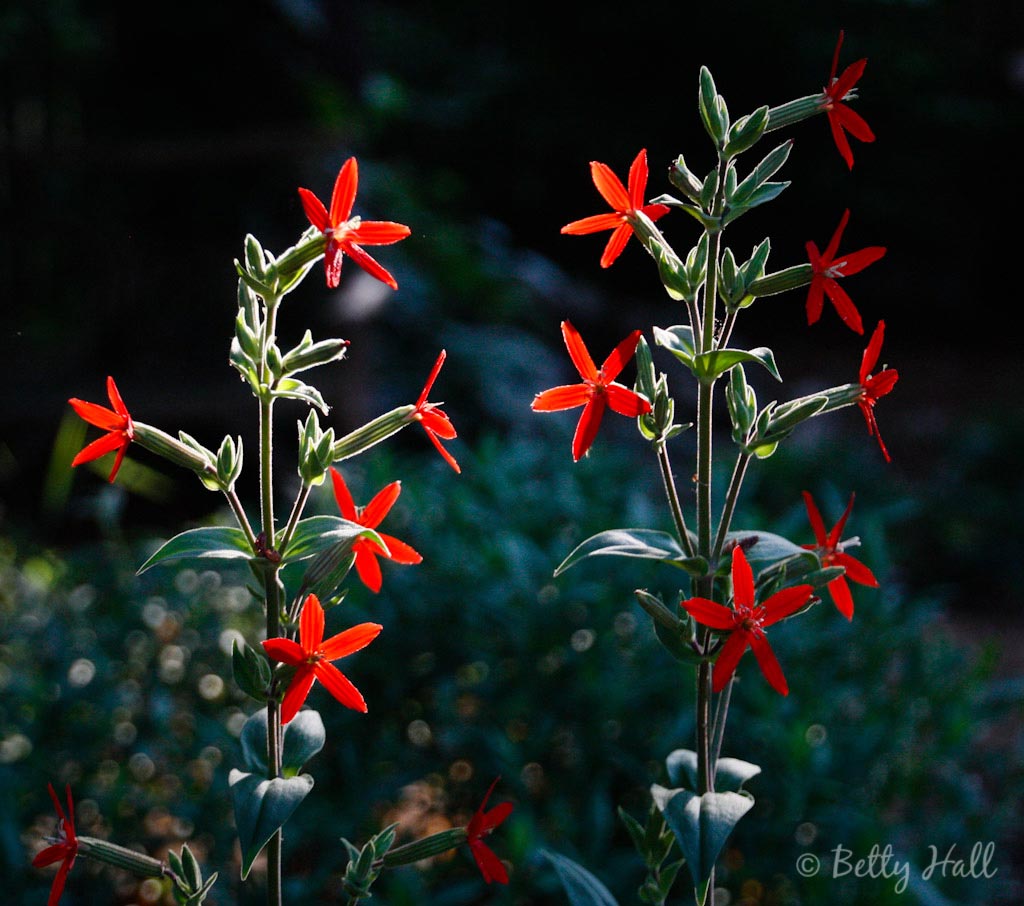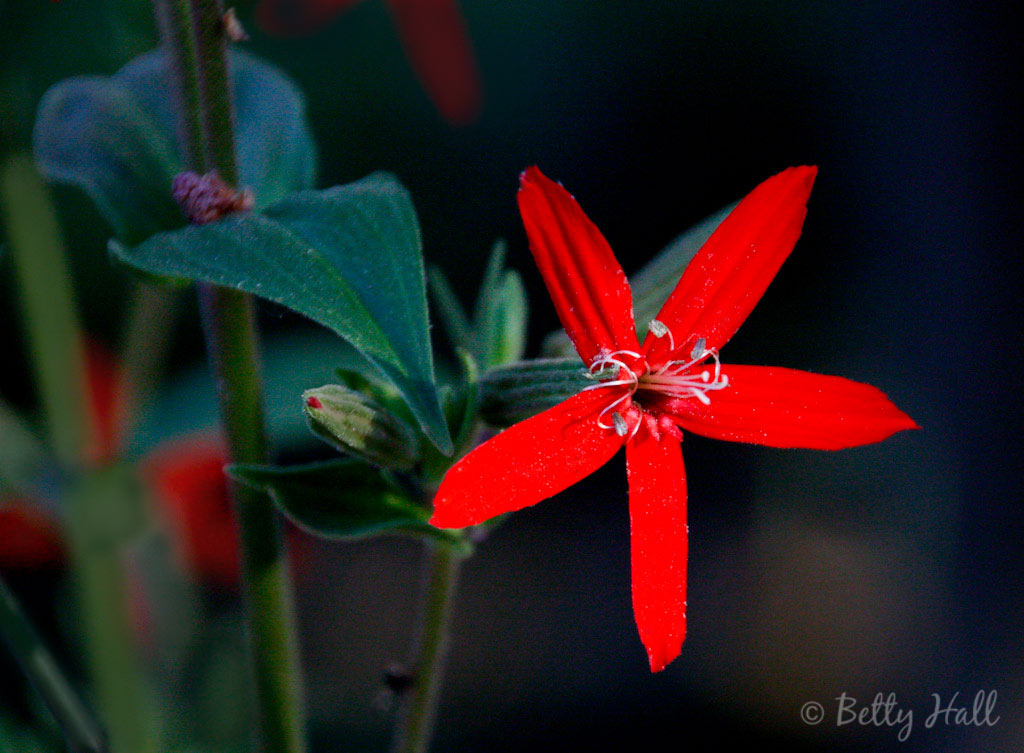Royal catchfly (Silene regia) is another native perennial that has done well in spite of our prolonged hot, dry weather. It’s been blooming for over a month and continues to provide a much-appreciated bright spot in the backyard. It’s especially striking when backlit by the morning sun.

It grows well in full sun or part shade. We can see and enjoy this 4-5 ft. slender plant from a distance, but I think it’s even more striking when seen up close. 
We’ve seen pipevine swallowtail butterflies (Battus philenor) at the blossoms, and a ruby-throated hummingbird (Archilocus colubris) is now making regular visits.
For all these reasons, Royal Catchfly is on my list of 25 favorite native plants. If you don’t have it in your garden, I hope you’ll consider trying it.


Drop dead georgeous, one of my favorite images. I love how you help me see plants in a different light. Literally and figuratively! Are those tiny gnats stuck to the leaves of the top image? “Catch-fly” ? 🙂
Thanks, Connie. And yes, you have very good eyesight. Those are indeed tiny insects. I didn’t realize they were there until after I had placed the new website banner!
How beautiful Betty! I don’t remember seeing it where we live (Ontario). The buds remind me a bit of Lychnis Coronaria which we have plentifully here.
Can one purchase Royal Catchfly at any nurseries?
Louise, I’m guessing they will only be available from nurseries that focus on native plants. I see that both seeds and plants are available over the internet.
Betty, that’s a beautiful plant! Where could we find some to buy? It would be perfect for the lower part of our terrace garden.
Sonja, I’ve checked with Shooting Star Nursery near Georgetown
http://shootingstarnursery.com/catalog/
and they have plants in stock. Marianne Hunt, the owner, says that this is a good time to plant them.
Beautiful shots Betty! We’re going to get some of those for our gardens. Thank you for posting!
I predict you’ll enjoy them, Judy.
I learn things I’ve never drempt of do exist and am glad Connie May could see and pointed out the gnats because I was really wondering about the name Catchfly. Also I love your new black-on-black presentation and the title/subtitle fonts on your Royal Catchfly banner. BEAUTIFUL!
Beth, I, too, appreciate the learning that can happen when we share observations and information. And thanks for your comments on the new format. I’m also interested to know what others think about the larger photos.
Betty—I have a Royal catchfly blooming in my native plants garden. It is new this year and I’m very pleased with its beauty and hardiness through this heat and drought. The upper leaves and stems are covered with miniscule black things not much bigger than the period at the end of this sentence. I hesitate to say insects because they look more like tiny granules, although I think I see some clear wings as well on the leaves. It would take a microscope to tell more. They don’t appear to be harming the plant at all and they have been there for several weeks. The stems and leaves are somewhat sticky to the touch and it occurred to me that this might be why the plant is called “catchfly.” Could these be tiny flies caught by the stickiness? I’m curious. Do you have any ideas?
Susan, thanks for your observations. I have now examined my catchfly with a hand lens and am surprised at the variety of small insects that appear to be stuck to the sticky stems and leaves. So I’m guessing your little black things are miniscule insects. And yes, I think all of this is why it is called catchfly.
Thanks so much for this tip!
Where can I get seeds…or do they spread by roots and bulbs?
Norma, you can get the plants at Shooting Star Nursery (see my comment to Sonja). You can also plant seeds and I’ll have plenty to share in about a month. Marianne at Shooting Star said that getting seeds started can be tricky.
This is indeed an amazingly beautiful plant. A couple of observations after years of loving and growing this plant. First, it is good to plant this Catchfly in a location with some smaller plants in front. The bottom leaves tend to get brown, even before it stops blooming. And, second, this plant does not like to be crowded. It will disappear if there are too many aggressive plants near-by. A sunny spot is best!
Thanks, Linda. Great information and I appreciate you sharing.